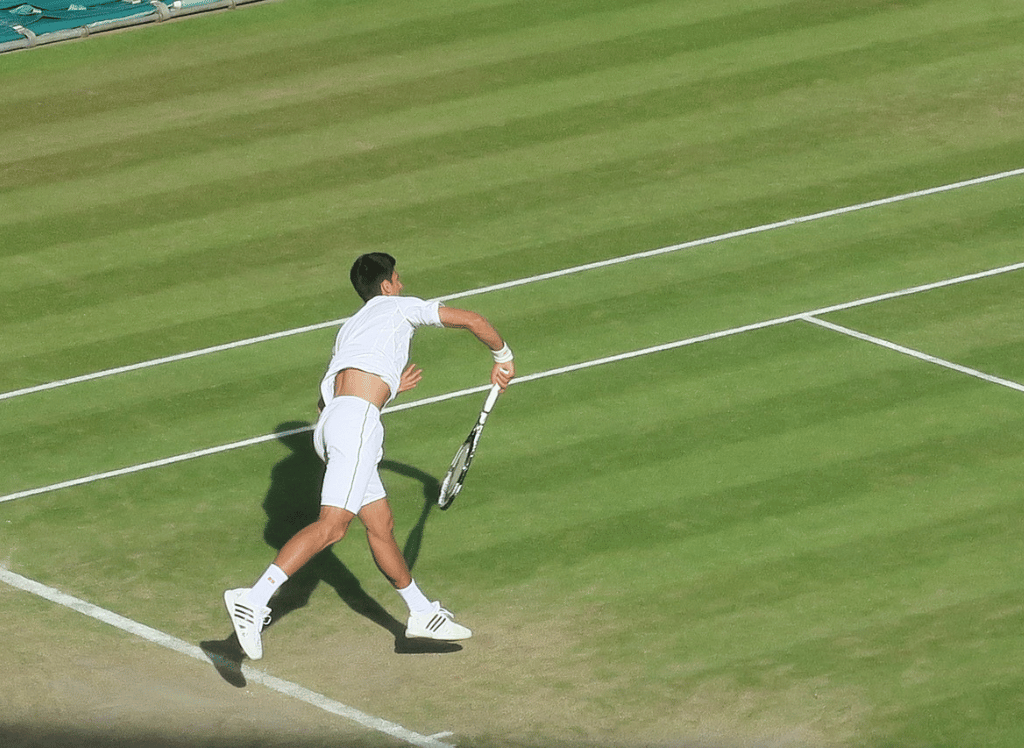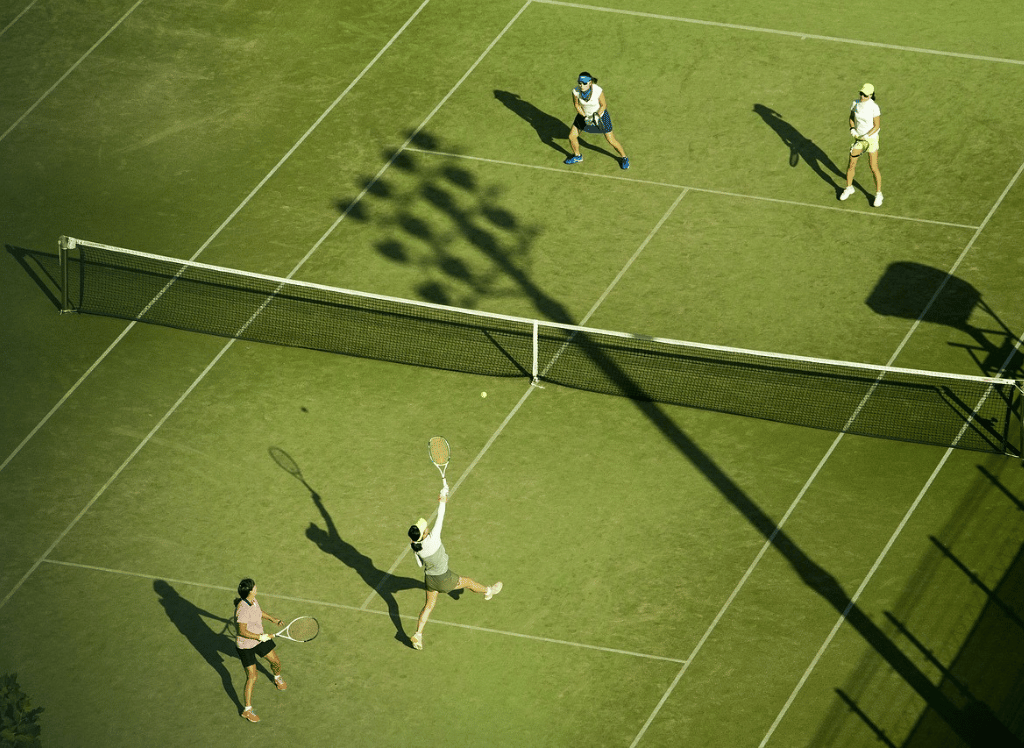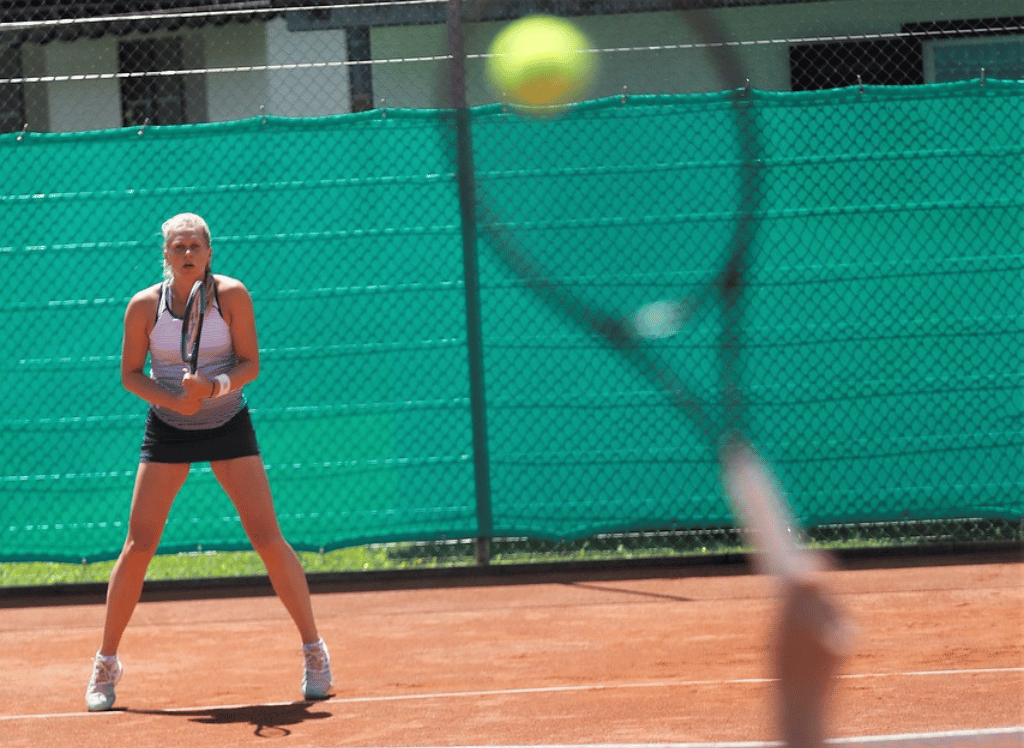In the thrilling world of tennis, the serve is where the action begins. But what happens when the server flubs not once, but twice? Enter the double fault—a term that sends shivers down the spine of even the most seasoned tennis players.
What is a double fault in tennis?
A double fault is when a player fails to get the ball into the correct service box on both their serve attempts. This blunder hands a point to the opponent, making it a crucial aspect of the game to master.
Serving
Before diving into double faults, let's break down the serve itself. The serve starts with the player standing behind the baseline, tossing the ball into the air, and hitting it into the opponent's service court.
The first serve is often a powerful shot aimed at gaining an advantage, while the second serve is usually more conservative to avoid a double fault.
The First Serve
The first serve is where players often unleash their inner beast. It's all about power, speed, and precision. A successful first serve can set the tone for the entire point, putting the opponent on the defensive right from the get-go. However, the risk of missing the service box is high, leading to the dreaded second serve.
The Second Serve
After a missed first serve, the second serve is the player's safety net. This serve is typically more controlled, with added spin to ensure it lands in the correct service box. The goal here is to avoid double faulting and giving away points. However, a weak second serve can be easily attacked by the opponent, putting the server at a disadvantage.
The Impact of Double Faults
Double faults can be a crucial game changer. Imagine you're in a tight match, and suddenly, you double fault. It's like handing your opponent a golden ticket to win the point. The number of double faults can significantly affect the outcome of tennis matches, making it essential to minimize them. Players who consistently double fault often find themselves losing focus and, ultimately, the match.
Common Causes of Double Faults
Several factors contribute to double faults. One common misconception is that only beginners double fault frequently. Even professional players have bad days where they struggle with their serve. Factors like poor ball toss, incorrect grip, and lack of practice can all lead to more double faults. Additionally, mental pressure and fatigue can cause players to lose their consistency, resulting in service faults.
Techniques to Reduce Double Faults
Reducing double faults requires a combination of physical and mental strategies. Practicing a consistent serve is crucial. Focus on your ball toss, as a poor toss can throw off your entire serve. Incorporate different types of serves, like the kick serve, to add variety and reduce predictability. Mental preparation is equally important; staying calm and focused can help you avoid mistakes.
Foot Faults
This is another form of service fault that can lead to double faulting. To avoid foot faults, practice serving from behind the baseline and pay attention to your foot placement. Consistency in your serve routine can help minimize these errors.
Famous Double Faults in Tennis History
Even the best players have had their share of double faults. For instance, Serena Williams, known for her powerful serve, has double faulted in crucial moments; like in the semifinals in the US Open. In another game, she double faulted twice in a row, costing her the match. These instances remind us that double faults can happen to anyone, regardless of skill level.
The Psychological Aspect
The mental game in tennis is just as important as the physical one. Double faults can mess with a player's head, leading to a downward spiral. Losing focus and confidence can result in more double faults, creating a vicious cycle. Mental toughness and resilience are key to overcoming these challenges.
Practice Makes Perfect
The old adage "practice makes perfect" holds true in tennis. Regular practice can help you develop a consistent serve and reduce the number of double faults. Focus on your technique, experiment with different serves, and simulate match conditions to prepare for real-game scenarios. The more you practice, the more confident you'll become in your serve.
The Role of Equipment
Believe it or not, your equipment can also impact your serve. Using the right racket and strings can enhance your control and power. Make sure your racket is suited to your playing style and that your strings are properly tensioned. Small adjustments in your equipment can lead to significant improvements in your serve consistency.
The Role of Spin
Adding spin to your serve can help you avoid double faults. Spin serves, like the kick serve, are more likely to land in the correct service box. They also make it harder for your opponent to return the serve effectively. Experiment with different spins to find what works best for you.
The Importance of Consistency
Consistency is key in tennis. A consistent serve can help you avoid double faults and keep the pressure on your opponent. Focus on developing a reliable serve routine and stick to it. Consistency in your serve can make a significant difference in your overall performance.
The Final Word on Double Faults
Double faults are an inevitable part of tennis, but they don't have to be a game-ender. By understanding the causes and implementing strategies to reduce them, you can improve your serve and minimize the impact of double faults on your game. Remember, even the best players double fault, but it's how you respond that counts.
Double Fault in Tennis FAQs
What is a double fault in tennis?
A double fault in tennis occurs when a player fails to get the ball into the correct service box on both their first and second serve attempts, resulting in a free point for the opponent.
How can I reduce the number of double faults in my game?
To reduce double faults, focus on practicing a consistent serve, improving your ball toss, and incorporating different types of serves like the kick serve. Mental preparation and staying calm under pressure are also crucial.
Are double faults common in professional tennis?
Yes, even professional players experience double faults. Factors like mental pressure, fatigue, and technical errors can lead to double faults, but pros often have strategies to minimize their occurrence.
Can you double hit in tennis?
No, a player is not allowed to hit the ball twice in a row during a point. This would result in a point for the opponent. However, if the first hit was unintentional or caused by an outside force (e.g. strong wind), it may not be considered a double hit.
Summary
Double faults in tennis are a critical aspect that can influence the outcome of a match. They occur when a player fails to deliver a valid serve twice in a row, giving the opponent a free point. Understanding the mechanics of serving, practicing consistently, and employing mental strategies can help reduce the number of double faults. Even professional players experience double faults, but with the right approach, you can minimize their impact on your game.








